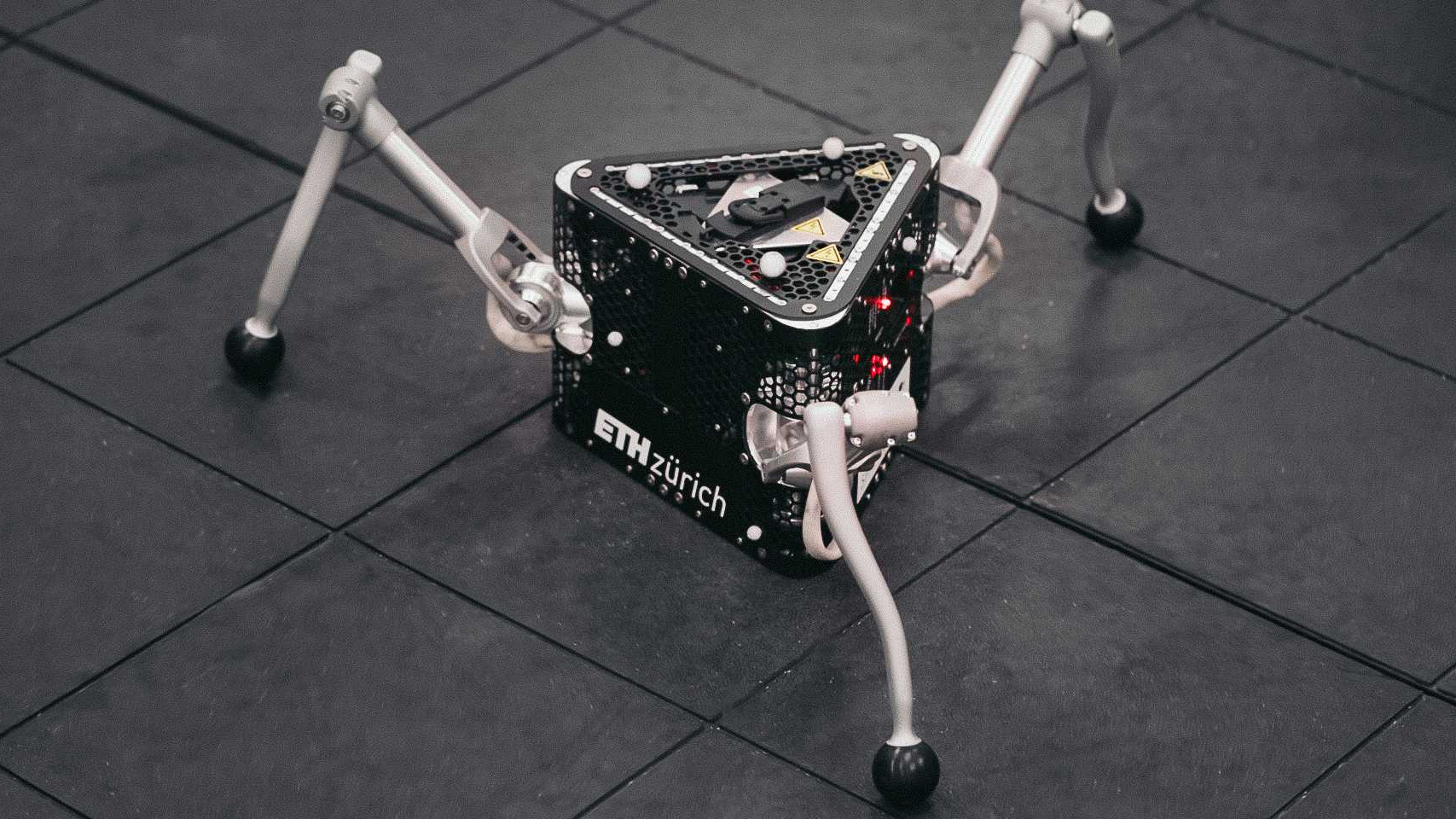This little robot can hop in zero-gravity to explore asteroids
SpaceHopper is a three-legged robot explorer that should be able to jump around on asteroids.

A three-legged robot named SpaceHopper could help combat the challenges of exploring low-gravity environments, such as those found on asteroids or moons.
The SpaceHopper program was first launched two and a half years ago as a student research project at ETH Zurich university in Switzerland. And recently, researchers tested the hopping robot in a simulated zero-gravity environment during a European Space Agency parabolic flight, according to a statement from the university.
The robot consists of a triangular body with an articulated leg at each corner. Each of these three legs has a knee and a hip joint, allowing the robot to push off from a surface, kick to propel itself through space and control its landing within a designated area. SpaceHopper is designed specifically to explore relatively small celestial bodies such as asteroids and moons, where there is little to no gravity.
Related: Fun in Zero-G: Weightless Photos from Earth and Space
"[Asteroids] are thought to contain valuable mineral resources that could be of use to humankind in the future," researchers said in the statement. "The exploration of these bodies could also give us insights into our universe's formation."
However, exploring these types of celestial bodies can be challenging. In an environment with almost no gravity, there is basically no traction between a spacecraft's wheels and the surface it drives across; there is barely any atmosphere for a spacecraft to fly through, if there is one at all. That's why SpaceHopper instead performs brief hops to move upwards and sideways.
The recent parabolic flight allowed the researchers to simulate the low-gravity conditions in which SpaceHopper may one day be deployed. A video taken during the flight shows SpaceHopper kicking each of its three legs in coordinated movements to stay lifted during periods of zero gravity, which occurred about 30 times per flight, for about 20-25 seconds each.
Breaking space news, the latest updates on rocket launches, skywatching events and more!
"The experiments were very successful. We were able to show that the robot can use its legs to reposition itself and jump in a certain direction," the researchers said in the video. "Overall, it was very successful."

Samantha Mathewson joined Space.com as an intern in the summer of 2016. She received a B.A. in Journalism and Environmental Science at the University of New Haven, in Connecticut. Previously, her work has been published in Nature World News. When not writing or reading about science, Samantha enjoys traveling to new places and taking photos! You can follow her on Twitter @Sam_Ashley13.
